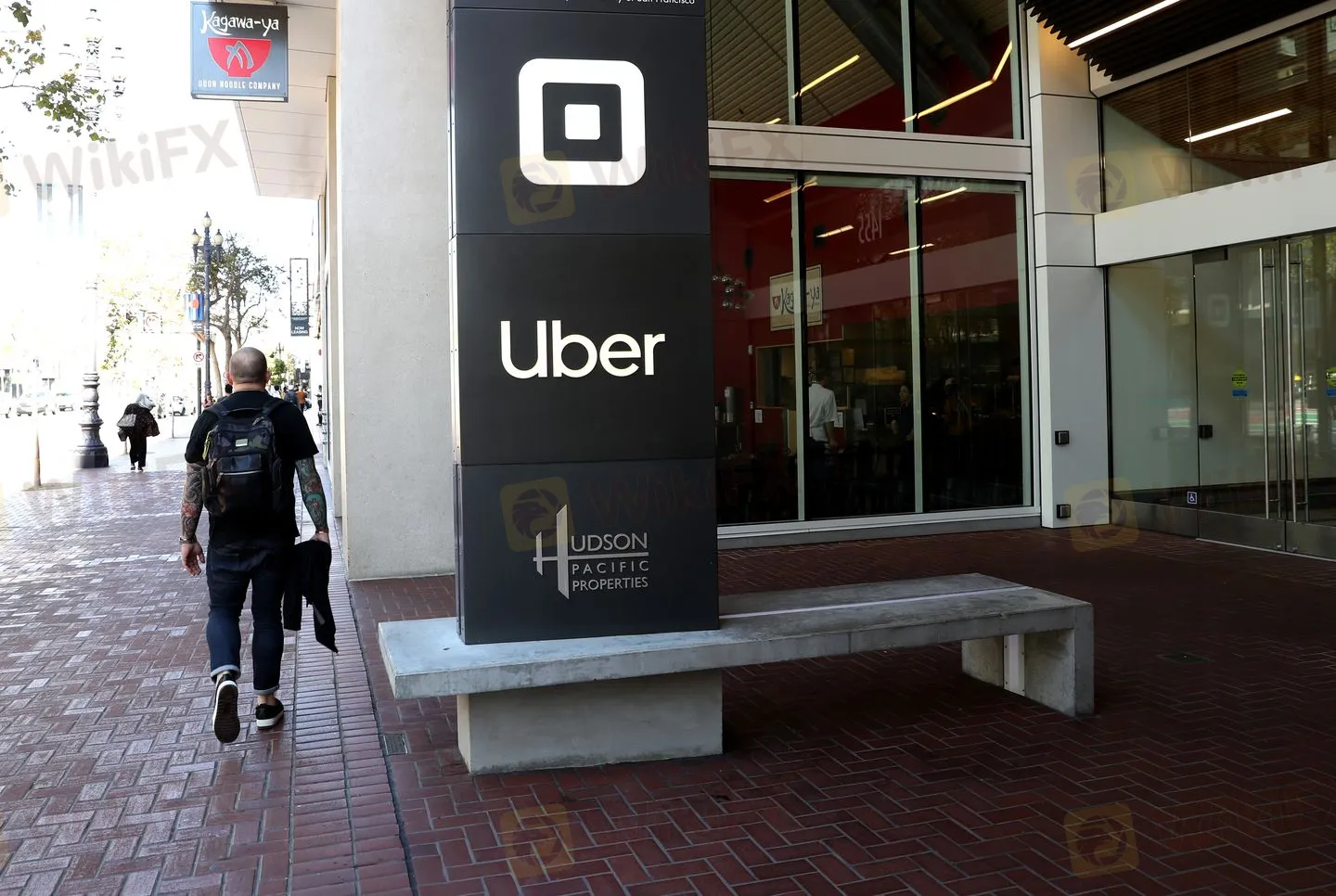简体中文
繁體中文
English
Pусский
日本語
ภาษาไทย
Tiếng Việt
Bahasa Indonesia
Español
हिन्दी
Filippiiniläinen
Français
Deutsch
Português
Türkçe
한국어
العربية
Uber reports $1.2 billion loss nearly six months after going public
Abstract:The company’s employee lockup period was expected to lift, raising concerns about a potential rush to sell its stock.
The companys employee lockup period was expected to lift, raising concerns about a potential rush to sell its stock.

Uber posted a $1.2 billion loss on healthy revenue growth, a better-than-expected result nearly six months after its May initial public offering.
The loss was narrower than the company‘s $5.2 billion second-quarter deficit, beating analysts’ expectations, though it comes ahead of a potential stock sell-off later this week when employees are able to start selling their stock options. Uber says it is in active discussions with shareholders to prevent a sell-off.
The company is under increasing pressure to demonstrate its ability to turn a profit as rival Lyft posts shrinking losses and better-than-expected growth figures half a year after going public. Uber also touted that its revenue had grown 30 percent, in addition to increased returns on its rides segment in part due to a cooling price war.
Ubers valuation has been sliced by a third since it was listed on the stock market at $45 in May.
Ubers stock dropped more than 5 percent in after-hours trading after the company posted its third consecutive loss topping $1 billion.
Analysts were discouraged by a slight miss on gross bookings, a gauge of demand, from the combined Rides and Eats business. Gross bookings for a trip represent the total paid by a customer for the ride or food delivery. That category rose 29 percent to $16.47 billion compared with the same quarter a year ago.
“For a company where investors are already skeptical, they needed to come out with an A-plus quarter and instead it was a B-minus,” said Dan Ives, an analyst with Wedbush Securities. “This, as a precursor to Wednesdays lockup — there are lots of agita from investors, and this quarter did not soothe those fears.”
On the companys earnings call, Uber CEO Dara Khosrowshahi said users could expect to see fewer discounts on shared-ride products such as Uber Pool and Express Pool as the company shifts.
“The focus really is to drive lower rates based on the best technology out there, versus just driving lower rates and growth through discounting,” he said.
Meanwhile, the company‘s employee lockup period, where there are restrictions on whether workers can sell their stock, was expected to lift this week, raising concerns about a potential rush to exercise those options. More than $20 billion in stock could come into play, according to Ives — or nearly 40 percent of the company’s market capitalization at the end of Monday.
Uber Chief Financial Officer Nelson Chai sought to allay those fears, in response to an analyst question about whether Uber would work with shareholders to prevent that outcome.
“You can assume that weve had a lot of dialogue and very active dialogue” with shareholders, Chai said.
Lyfts stock climbed after it reported strong revenue growth and a narrower quarter-over-quarter loss. The company also revised its financial outlook to predict higher-than-expected growth — though Uber remains the dominant player in the ride-hailing space.
Analysts had expected Uber to report revenue growth and a narrower loss, given the cutbacks and other efforts to make the company run more efficiently — expectations Uber matched. They were heavily focused this week on whether Uber could maintain enough cash on hand to keep itself afloat in the face of significant losses, even as the companys dominant market share — 70 percent or more, according to IPO documents from both companies — gave it an upside over its rival.
Uber said it closed out the quarter with more cash than the prior one, following asset sales and investments.
Disclaimer:
The views in this article only represent the author's personal views, and do not constitute investment advice on this platform. This platform does not guarantee the accuracy, completeness and timeliness of the information in the article, and will not be liable for any loss caused by the use of or reliance on the information in the article.
Read more

Lyft earnings: First look at just how bad coronavirus impact has been - Business Insider
Unlike Uber, Lyft has been tight-lipped about just how bad its rides business has been hurt — and it doesn't have a food-delivery arm to ease losses.
Venture capitalists reveal the startups that changed everything in the last decade - Business Insider
By leveraging smartphones, online marketplaces, and cheap access to technology, startups like Uber and Shopify became the talk of the town.
Google CEO salary raised to $2 million, chance to unlock $240 million+ - Business Insider
Pichai's salary will increase to $2 million, plus millions more in stock, some tied to the company's performance.
Uber and Lyft have to raise prices if they ever want to turn a profit - Business Insider
Lyft CEO Logan Green says the company tried to slow down its aggressive discounts recently, but had to stop since Uber didn't follow.
WikiFX Broker
Latest News
FCA Warns Against 10 Unlicensed or Clone Firms
CySEC Warns Against 14 Unlicensed Investment Websites
Top Currency Pairs to Watch for Profit This Week - March 31, 2025
Will natural disasters have an impact on the forex market?
Philippines Deports 29 Indonesians Linked to Online Scam Syndicate in Manila
Exposing the Top 5 Scam Brokers of March 2025: A Closer Look by WikiFX
Gold Prices Climb Again – Have Investors Seized the Opportunity?
Webull Launches SMSF Investment Platform with Zero Fees
Australian Regulator Warns of Money Laundering and Fraud Risks in Crypto ATMs
The Withdrawal Trap: How Scam Brokers Lure Victims into Paying More
Currency Calculator







